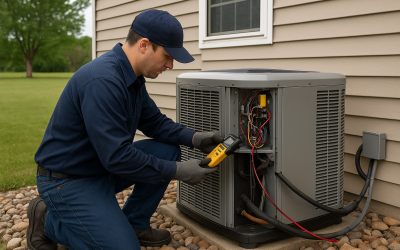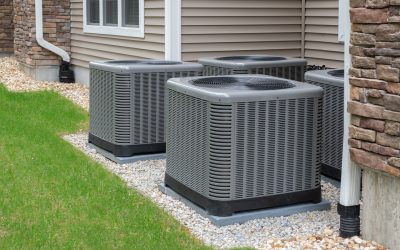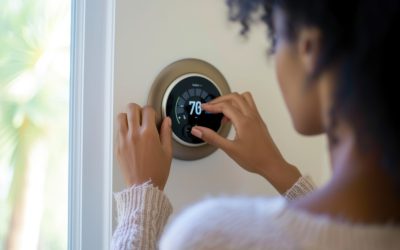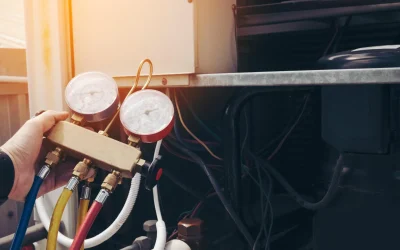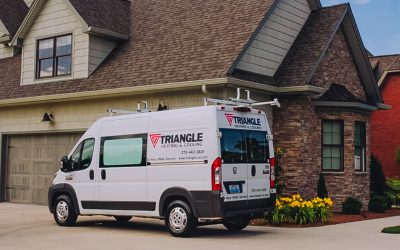Like every other part of an HVAC system, thermostats can occasionally malfunction and will eventually need to be replaced. Knowing the signs that your thermostat is nearing the end of its life will allow you to replace it proactively before your HVAC system becomes unusable. Watch out for these four signs that you need to replace your thermostat.
1. Incorrect Temperature Readings
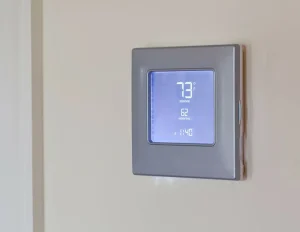
You can’t rely on your thermostat to heat and cool your home efficiently if it doesn’t read the current temperature correctly. Thermostats can give a faulty reading for several reasons, and not all of them mean that the thermostat has to go. Sometimes, relocating or re-leveling your thermostat is all that’s necessary to restore accurate temperature readings.
If your thermostat is level and tucked away from drafts and direct sunlight, you may need to open it and clean it out. Dust buildup in a thermostat can create an insulating layer and make the thermostat’s temperature reading much less accurate. If incorrect readings persist after cleaning the thermostat, you likely have a technical malfunction that warrants replacing the unit.
2. Blank Display
Digital displays on modern thermostats should never be blank. Most thermostats continue to display the current temperature, time, and possibly other information even when not in use. A blank thermostat display is a sign you should take notice of and investigate the thermostat.
Basic troubleshooting for a blank thermostat display includes checking the thermostat battery and the breaker or fuse on the thermostat’s circuit. In rare cases, your thermostat may have shut down because a safety switch was triggered in your HVAC system. Safety switches may trigger from issues like a flooding AC condensate drain pan or overheating in the furnace heat exchanger.
If you find no evidence of these problems when you inspect your system, the next point of failure is the wiring that provides power to your thermostat. If your thermostat was not mounted securely, the wiring inside might have disconnected from the contacts. An HVAC technician can inspect your thermostat to determine if loose wiring is to blame or if the thermostat simply needs replacing.
3. Difficulty Saving Settings
Smart thermostats have programmable features that allow you to tune your HVAC system to your needs. Most smart thermostats let you schedule your furnace and air conditioner to run at set times throughout the day or in response to temperature changes. Unfortunately, these settings won’t be very useful to you if you have to reprogram them each day.
A faulty thermostat will sometimes have difficulty saving the settings that the homeowner has chosen. This could be due to something as simple as a dead battery or something more serious, like a defect in the thermostat’s memory. Follow the manufacturer’s instructions to perform a factory reset on your thermostat and see if the problem persists. If you still cannot save your settings, this is more likely a hardware issue.
4. Cycle Problems
In a central HVAC system, the furnace, air conditioner, and blower rely on signals from the thermostat to start up and shut down. When your thermostat reads inaccurate temperatures or otherwise malfunctions, your HVAC system will not run at the appropriate times.
A faulty thermostat can cause your HVAC system to run for very short amounts of time before shutting off, a problem known as short cycling. Alternatively, your furnace or air conditioner may run continuously if the thermostat never sends the shut-off signal.
To identify cycle problems, time how long your system runs before shutting off when you set it at your standard temperature. Run times of less than ten minutes or more than an hour are a good sign you should call a technician to inspect your thermostat and potentially the rest of your system.
If you know the warning signs to look out for, you can keep thermostat troubles from putting a hold on your home’s comfort. Call us at Triangle Heating & Cooling if you need thermostat repair or any other HVAC service.



